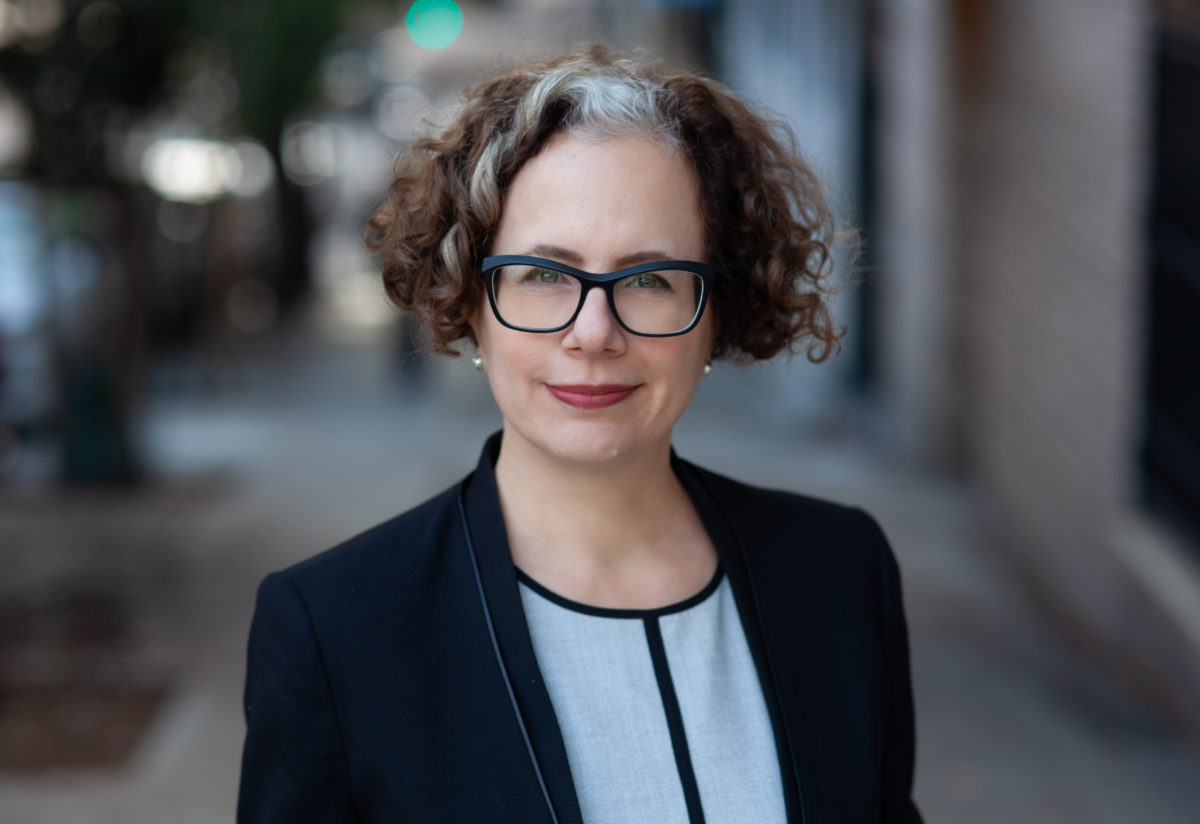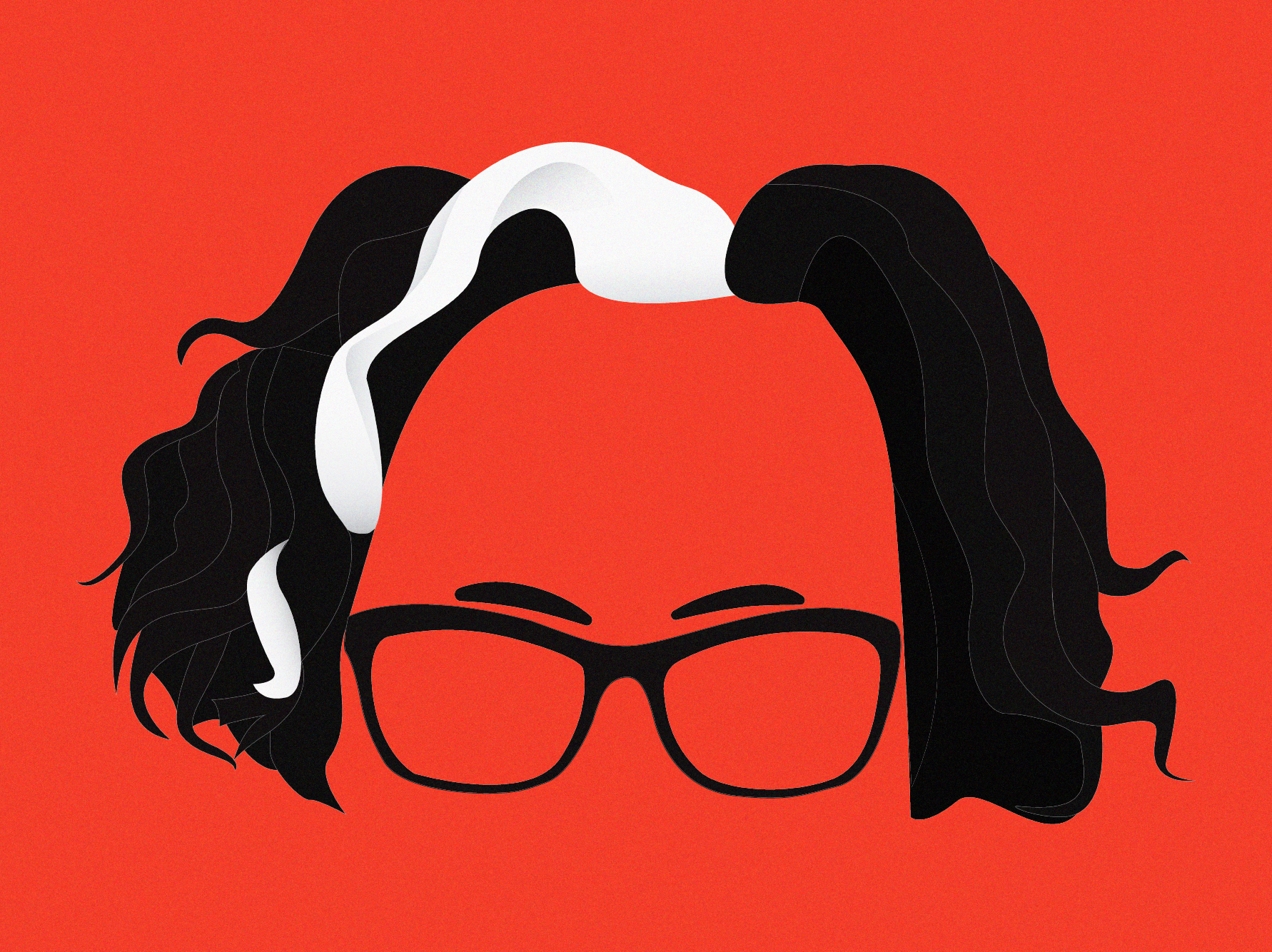[Correction: The number of people who attended the candidate presentation as part of the Parsons Executive Dean search on Nov. 7 at 2 W. 13 Street was approximately 100. Due to limited space in the Kellen Auditorium, folding chairs were set up and some people were turned away. An earlier version of this story overestimated the number by stating that about 500 people tried to attend.]
If you want a particularly grisly observation about what it means to be the head of Parsons, Juliette Cezzar has one for you:
“If you’re going to be a dental hygienist, be prepared for blood.”
Cezzar, an assistant professor of Communication Design, looked for this level of grit in each of the candidates for Parsons’ top job. Dr. Rachel Schreiber, the final pick announced on Dec 19, meets her standard.
“I’m really excited about the new executive dean,” said Cezzar, a former program lead of the Design and Technology and Communication Design departments. “Parsons is a very complex school embedded in another complex school, and we really need someone with the operational stamina and desire to go headfirst into that instead of spending two years just trying to figure out the puzzle and then questioning it.”
Schreiber’s career in the world of art and design spans over 22 years, from studio practice, non-profit higher education and administrative leadership. She is coming to Parsons from the San Francisco Art Institute, where she was most recently Provost and Senior Vice President.
“What I really liked about [Schreiber] was that she was the only candidate that knows what it’s like to be a design student as well as an administrator,” said Irish. “She has this breadth of experience that is both studio-based — which a lot of the other [candidates] did not have — and scholarly.”
— Jess Irish, Assistant Professor of Design and Technology, Parsons
Jess Irish, a full-time faculty member in the School of Art, Media, and Technology and an assistant Design and Technology professor, was most impressed by Schreiber’s diverse professional background and ambitions for Parsons.
“What I really liked about [Schreiber] was that she was the only candidate that knows what it’s like to be a design student as well as an administrator,” said Irish. “She has this breadth of experience that is both studio-based — which a lot of the other [candidates] did not have — and scholarly.”
Irish also thought having a woman at the head of the school was a plus.
“I think it will be a good thing to have a woman dean. I think that’s going to be a notable change. A lot of the running and leadership of the university is done by women and I think there has been a desire to see that continue in other levels of the university moving up,” Irish said.

Schreiber steps into a role that was held by Joel Towers’ for nearly a decade, during which he played a central role in redesigning many of Parson’s curricula and programs, constructing the Making Center, and working to bridge the gap between Parsons and the rest of the university. Towers will now serve as a university professor and continue as the director of the university’s Tishman Environment and Design Center.
A 20-person committee —described as “a Noah’s Ark” by its co-chair and associate dean of Art, Media, and Technology Lucille Tenazas— was responsible for selecting a new executive dean for Parsons. “There’s two of everything: two executive deans, two students, two Parsons staff, two central office staff, two school deans, a group of five faculty, and three board members,” Tenazas said. The selection process began in Spring of 2018.
“Last spring we held six listening sessions: two for faculty, two for staff and two for students,” said Laura Auricchio, Vice Provost for Curriculum and Learning and Professor of Art History, who co-chaired the committee. “We heard what every group wanted to see in the next dean of Parsons and incorporated that into the job description, which was collectively written by the committee.”
The job posting attracted competitors from a diverse set of backgrounds and positions all over the country, the selection committee co-chairs said. Of the six final candidates, four were deans at their current institutions. Four were female, two were African-American, and one was originally from India, though now based in the US. The candidates were spread across the U.S., in New York, Illinois, Kansas, Oregon, and California, and one was based in Canada.
In order to get more input, the committee also organized meetings for faculty to discuss the potential of each one at length. Both the job talks and these meetings were well-received and drew high participation from Parsons faculty, organizers said.
“We were able to really think through our opinions and articulate, as much we wanted to, our thoughts on each [candidate]’s strengths and weaknesses,” Irish said.
Auricchio was disappointed by the lack of overall student involvement in the search.
“Not a lot of students came to the forums,” Auricchio said. “Originally, we had set up a time and place for students to meet the candidates, but no one showed up.”
—Liz Park, second-year Communication Design, Parsons
“I feel like everyone just focuses on their homework and work…No one ever talks about anything in the administration. I don’t know if it’s that no one cares or if we genuinely don’t know anything about it.”
One exception was a forum hosted at 2 W. 13th St. held during the standard one-hour block where Parsons has no scheduled classes. About 100 people attended and extra chairs were set up. It was so packed that some students and faculty left, Auricchio said.
Many students said they were unaware or apathetic about the search process and about how the dean’s office would affect them generally.
“I feel like everyone just focuses on their homework and work,” said second-year communication design student Liz Park. “No one ever talks about anything in the administration. I don’t know if it’s that no one cares or if we genuinely don’t know anything about it.”
Cotter Christian, an assistant professor of interior design, attended all of the final candidates’ job talks and faculty-staff mixers after. He believes that there while there were ample opportunities for students to participate, many may not understand the importance of who is hired.
“Students are only here for the time they’re in school,” Christian said. “Many may graduate by the time the new dean will take over and may feel that it doesn’t directly impact them.”
He said that students should be invested in who comes into the job.
“The dean has the opportunity to shape the institution and impact the health and reputation of the school,” Christian said. “This directly correlates to their job opportunities in the future.”
Despite lack of awareness, some students had clear expectations for the incoming dean, urging Schreiber to prioritize students’ financial concerns.
“Scholarships should increase when tuition increases,” said Blair Overton, a Parsons student.
Schreiber acknowledged financial challenges students face during her job talk on Nov 13. She presented the questions: “How will we increase access to education?” and “How will we reduce tuition dependence?” as two of her focus points for the future of Parsons. She also emphasized the U.S. government’s role in recent decades of reducing funding and support for students and institutions of higher education.
Schreiber proposed expanding other channels of revenue to mitigate Parsons’ dependence on high tuition, such as sponsored studios and seeking out greater donations from individuals and organizations. She also described a financial program she helped integrate at SFAI that halted the increase in tuition for juniors and seniors with above a 3.0 GPA average who received financial aid.
“For a family with whom an entering student is a real financial stretch, two things [are true]: one, the three to four percent tuition increase every year affects at a greater dimension than other students. Also, those tend to be students whose financial situations with their families are precarious. So one small life event, the death of a grandparent or the loss of a job, means they can’t stay in school,” Schreiber explained.
However, Cezzar noted that the unique nature of Parsons may present challenges to Schreiber in implementing programs of this type.
“The concept of an internationally famous school embedded in a university doesn’t exist anywhere else,” said Cezzar, “Schreiber has the same responsibilities as the director of another private institution, but a lower amount of power.” •







